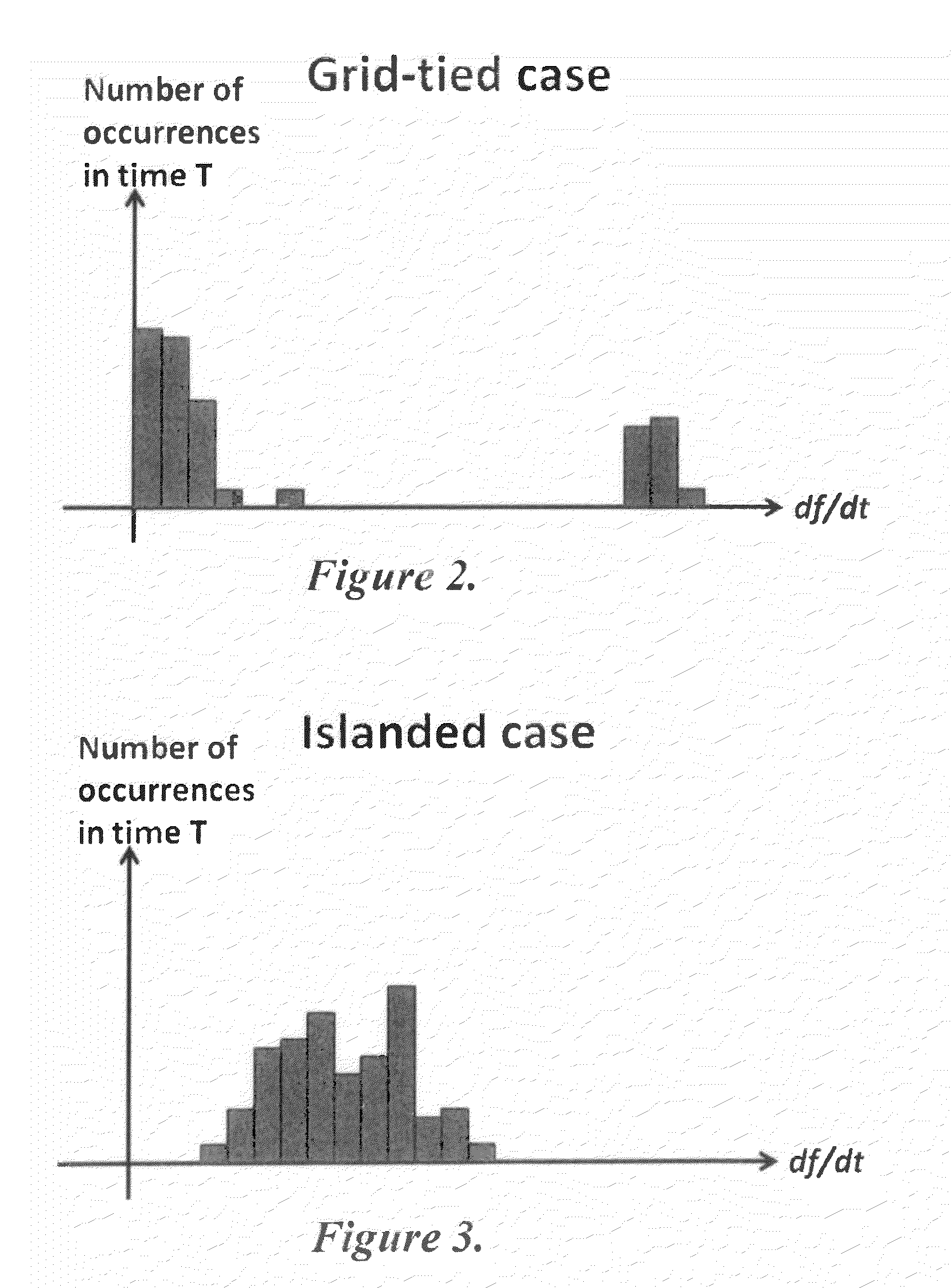Method and system for island detection and Anti-islanding protection in distributed power generation systems
a distributed power generation and island protection technology, applied in the direction of frequency measurement arrangement, dc source parallel operation, transportation and packaging, etc., can solve the problems of affecting the safety of personnel and equipment, damage to electrical equipment connected to the segment, and none of the prior methods, however, have proved entirely satisfactory, and achieve the effect of simple and effective methods, yet relatively simple and inexpensiv
- Summary
- Abstract
- Description
- Claims
- Application Information
AI Technical Summary
Problems solved by technology
Method used
Image
Examples
case b
[0028]a case involving a mixture of types of DER. From an anti-islanding perspective, the most difficult combination of DERs arises when inverter-based DERs are combined with synchronous generators, so that is the case that was selected here. Some of the inverters in the multiple-inverter case were removed to make room for a single 1 MVA synchronous generator.
[0029]The latter two cases C and D do not involve islands, but instead are indicative of false-trip immunity (i.e., cases in which ride through is desired). Case C was a desired ride-through case simulating a loss of mainline generation resulting in a system-wide frequency event. In this case, it is highly desirable that the island detection method be able to distinguish this case from an unintentional islanded case and stay online to support the system. For this simulation, the frequency trajectory used was one measured during a major Italian blackout of 2003, scaled to 60 Hz. To implement this frequency trajectory, a programm...
case d
[0030 is another ride-through case, this one involving a major local switching event such as mentioned above with respect to FIG. 7. Again, the anti-islanding system must be able to distinguish such an event from an island to avoid excessive false tripping. To simulate this event, a heavily-loaded 200-hp three-phase induction motor was switched directly across the line at a distal point on the feeder.
[0031]In each of the simulations, ToB1 was set to 3 mHz / sec, and ToB2 to 8 mHz / sec. The frequencies were measured by a phase-locked loop.
TABLE 1FeederTestIEEE 34 Bus StandardCaseFeederReal-World FeederAIsland DetectedIsland DetectedBIsland DetectedIsland DetectedCSuccessful Ride-ThroughSuccessful Ride-ThroughDSuccessful Ride-ThroughSuccessful Ride-Through
[0032]As can be seen, the RoCoF-H method and “zero-time” criterion achieved the desired result in each of the simulated cases for both feeders.
[0033]In use, the RoCoF-H method is applied to a DER coupled to a grid-tied feeder by first d...
PUM
 Login to View More
Login to View More Abstract
Description
Claims
Application Information
 Login to View More
Login to View More - R&D
- Intellectual Property
- Life Sciences
- Materials
- Tech Scout
- Unparalleled Data Quality
- Higher Quality Content
- 60% Fewer Hallucinations
Browse by: Latest US Patents, China's latest patents, Technical Efficacy Thesaurus, Application Domain, Technology Topic, Popular Technical Reports.
© 2025 PatSnap. All rights reserved.Legal|Privacy policy|Modern Slavery Act Transparency Statement|Sitemap|About US| Contact US: help@patsnap.com



